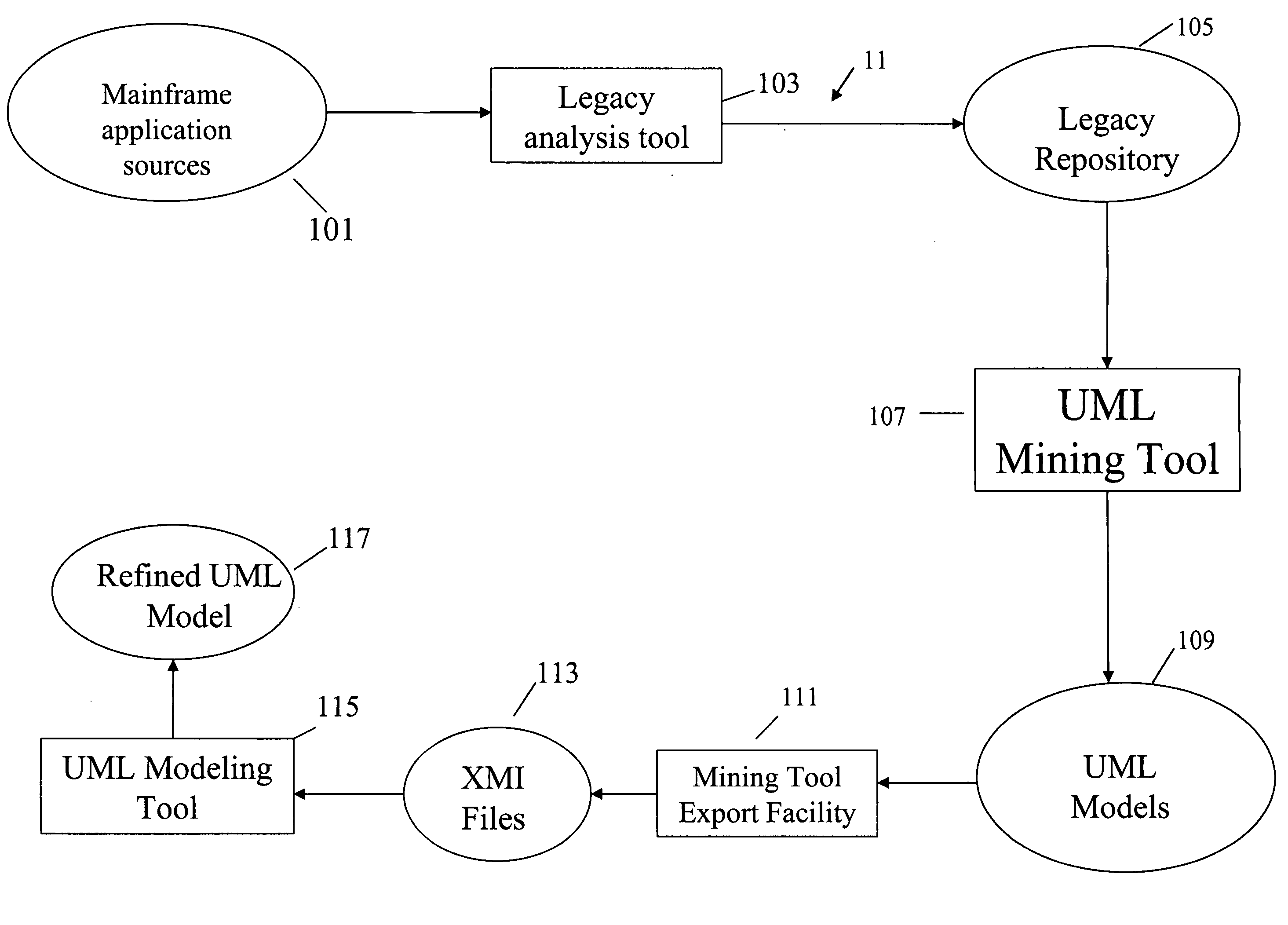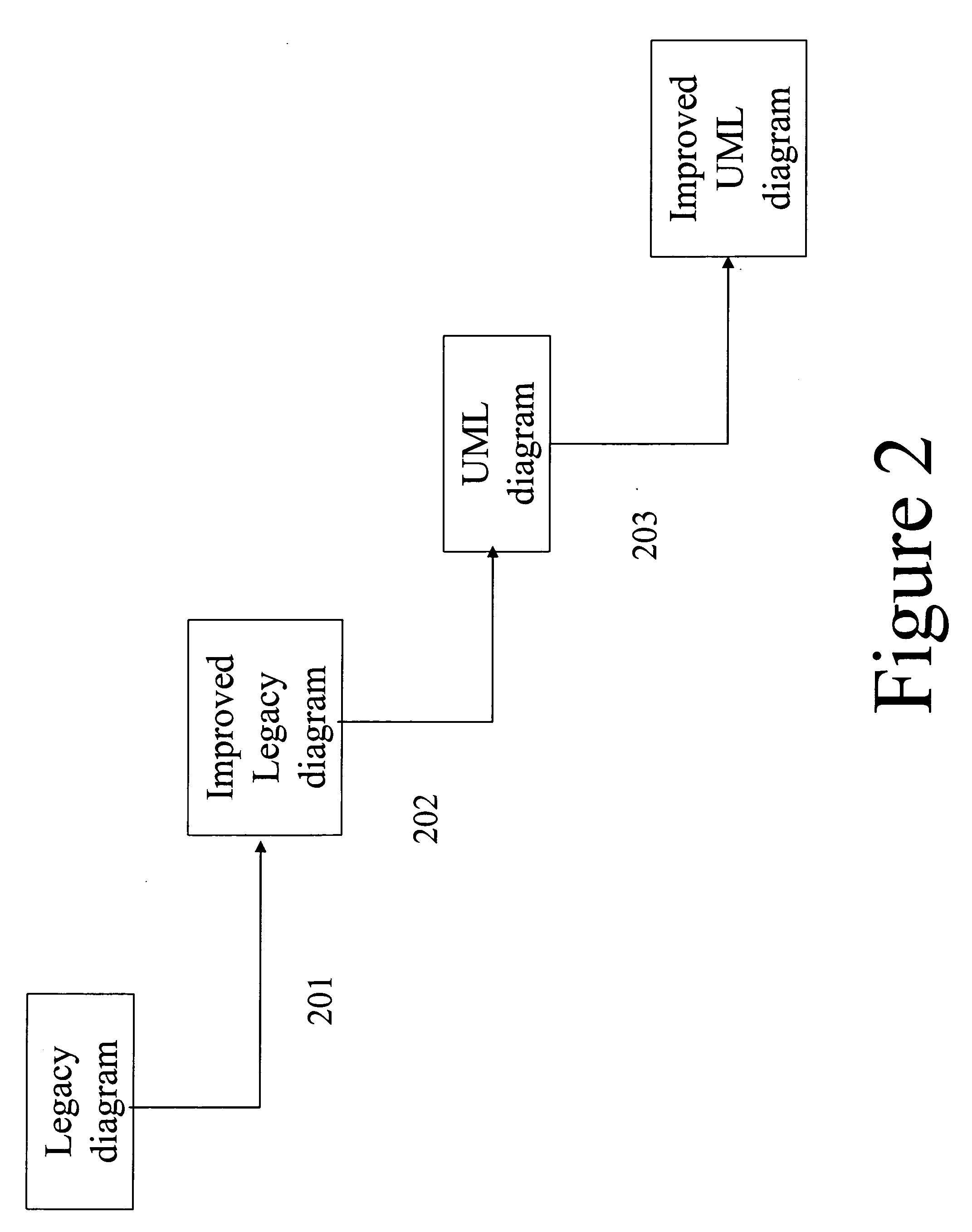System and method for extracting UML models from legacy applications
a technology of legacy applications and computer programs, applied in the field of computer program products and methods for extracting uml models from legacy applications, can solve the problems of not using uml tools to describe what are known generally as legacy applications, and no such tools offering the same reverse engineering capability for use with legacy applications, and achieve the effect of improving the uml model
- Summary
- Abstract
- Description
- Claims
- Application Information
AI Technical Summary
Benefits of technology
Problems solved by technology
Method used
Image
Examples
example
[0038]This is an example of what kind of functionality is described in an UML model and what kind of functionality is described in business rules. A UML model may describe, for example, how to create an insurance policy by adding information about the customer and the car, in a specific number of steps. The business rules are concerned with the calculation of the premium or the criteria for accepting a particular customer.
[0039]In the past, the two aspects, i.e., UML and business rules were managed by separate technologies such as the previously described modern UML tools or business rules engines as noted with reference to the copending patent application. In accordance with the invention the two are brought together so that one analyzing an application can determine that a specific business rule is invoked during a particular process, which process is defined by the UML model. Thus, in accordance with the invention, some UML objects are able to automatically or manually be linked ...
PUM
 Login to View More
Login to View More Abstract
Description
Claims
Application Information
 Login to View More
Login to View More - R&D
- Intellectual Property
- Life Sciences
- Materials
- Tech Scout
- Unparalleled Data Quality
- Higher Quality Content
- 60% Fewer Hallucinations
Browse by: Latest US Patents, China's latest patents, Technical Efficacy Thesaurus, Application Domain, Technology Topic, Popular Technical Reports.
© 2025 PatSnap. All rights reserved.Legal|Privacy policy|Modern Slavery Act Transparency Statement|Sitemap|About US| Contact US: help@patsnap.com



